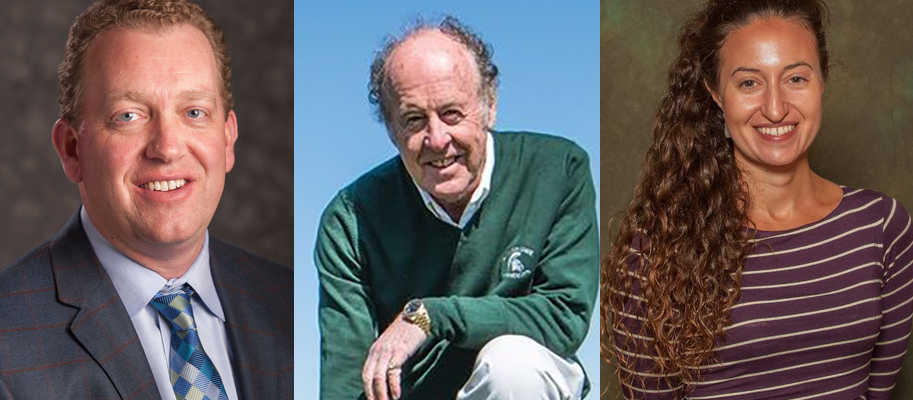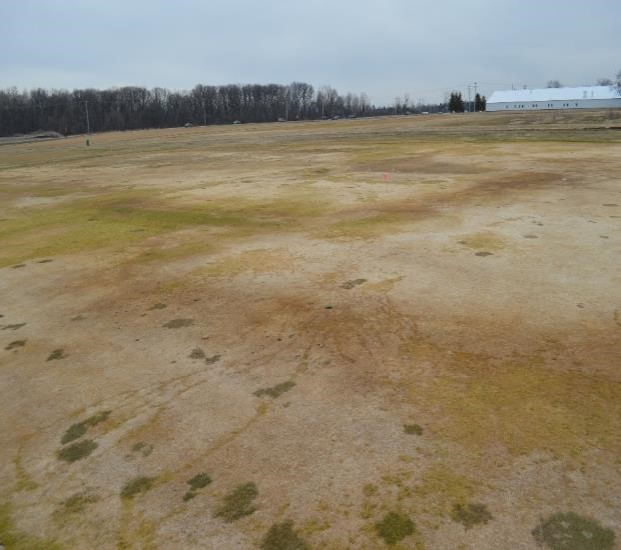MSU researchers part of team investigating winter stresses of turfgrass in northern climates
Led by the University of Minnesota, the group received an $8M USDA Specialty Crop Research Initiative grant

EAST LANSING, Mich. – Three Michigan State University scientists are part of a multi-institutional team studying winter stresses on turfgrass in northern climates. The group received an $8 million grant from the U.S. Department of Agriculture’s National Institute of Food and Agriculture (NIFA), with $740,000 coming to MSU. The grant is funded by NIFA’s Specialty Crop Research Initiative.
All three MSU researchers involved in the project are in the Department of Plant, Soil and Microbial Sciences. Kevin Frank is a professor and turf extension specialist, Joe Vargas is a professor of plant pathology, and Emily Merewitz-Holm is an assistant professor and expert in plant physiology. The project is led by Eric Watkins, a professor at the University of Minnesota.
When temperatures plunge, several turfgrass species deal with a multitude of threats that can lead to injury or death, known as winterkill. These include freeze and thaw events caused by fluctuating temperatures in late fall and early spring, prolonged exposure to cold air with no snow insulation, diseases, and ice encasement.

Despite these annual challenges facing turfgrass managers, winter stresses are not well-understood.
For this project, researchers are seeking to define the mechanisms that cause winter injury and develop best practices to mitigate them using a variety of techniques.
“This project includes some of the world’s foremost experts on turfgrass management, and it’s collaborative efforts like this that lead to innovation,” said Frank, whose work is also supported by MSU AgBioResearch.
In collaboration with more than 200 stakeholders, the first objective is to monitor golf courses in cold climates to learn more about the conditions that lead to winter injury. Using this information, a new web-based application will be created to predict stresses more accurately.
Researchers are also looking to improve their understanding of how various turfgrass species cope with winter stresses, knowledge that can inform breeding strategies.
“We really do not yet have a clear picture of what several winterkill stresses are changing inside of the plant and why,” Merewitz-Holm said. “For example, one turf species is resilient under months of ice encasement while another can die after just a few weeks.”
Turfgrass pathogens such as snow molds will be a focus of research as well, to learn more about how they occur and test non-fungicidal treatments. Vargas said that this information could lead to the development of disease-resistant cultivars to prevent snow molds and reduce pesticide applications. Advancements in breeding can also make turfgrass more resilient to current and changing climates.
In addition to new prevention and recovery strategies, researchers are exploring the economic impact of winter injury.
“We know this is a significant problem in colder climates, and it’s important to understand the true scope of the problem,” Frank said. “We’ll engage with turf stakeholders through surveys that capture the toll it has taken on their operations.”
The surveys will collect data on the last five years of economic impact, such as the characteristics of the affected areas, cost of recovering damaged turf, the length of time it took to recover, and the backgrounds of the turf managers.
Finally, the group will pursue several outreach initiatives, targeting turf managers, homeowners, seed producers, golf course superintendents, departments of transportation and more.
“Each of the partner institutions is deeply invested in providing solutions that are implementable at all scales,” Frank said. “Ultimately, our job is to advance knowledge on this topic through research, and the outreach component thereafter will be essential."



 Print
Print Email
Email




